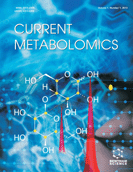Abstract
Background: Despite cisplatin’s effectiveness against ovarian cancer, these cancer cells have shown the ability to resist chemotherapy – a resistance that represents a major obstacle to current therapeutic strategies.
Objective: The objective of the study was to determine whether or not cellular resistance could be linked to changes in metabolites.
Methods: Liquid Chromatography-mass Spectrometry (LC-MS) hydrophilic interaction chromatography was used to analyze the intracellular metabolomic profile of ovarian cancer cell line A2780 and the cisplatin resistant cell line A2780CR, before and following treatment with cisplatin at inhibitory concentration (IC50). Phenotype MicroArray™ (PM) experiments were also applied in order to test carbon substrate utilization or sensitivity in both cell lines after exposure to cisplatin. Data extraction was carried out with MZmine 2.10 with metabolite searching against an in-house database. The data were analyzed using univariate and multivariate Principal Component Analysis (PCA) and Orthogonal Projections to Latent Structures Discriminant Analysis (OPLS-DA) methods.
Results: There was clear discrimination between the controls and the cisplatin treated samples on the basis of PCA and OPLS-DA. The cisplatin-sensitive cells were as expected more sensitive to cisplatin than the resistant cells with IC50 values of 4.9 and 10.8 µg/mL, respectively. The results demonstrated that the intracellular metabolomic changes induced by cisplatin in the cisplatin-sensitive cells led to reduced levels of acetylcarnitine, phosphocreatine, arginine, proline and Glutathione Disulfide (GSSG) as well as to increased levels of tryptophan and methionine. While PM experiments showed lowered glucose metabolism in the sensitive cells following treatment which was reflected in decreased levels of ATP.
Conclusion: Overall the metabolic changes induced in A2780CR cells by cisplatin were much fewer than those induced in A2780 cells. The sensitive cells had a much quicker onset of apoptosis than the resistant cells as judged by measurement of caspase 3. Increased resistance to oxidative stress in the resistant cells was consistent with higher levels of proline, due to less induction of proline dehydrogenase, and elevated levels of glutathione (GSH) and GSSG following cisplatin treatment.
Keywords: Cisplatin, A2780, A2780CR, ovarian cancer, LC-MS, Phenotype MicroArray™.
Graphical Abstract
 41
41 3
3








.jpeg)








